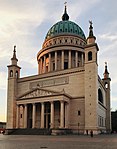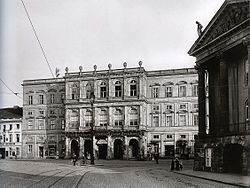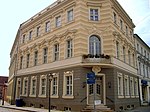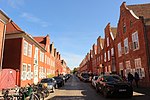Old Market Square, Potsdam
Buildings and structures in Germany destroyed during World War IIDemolished buildings and structures in GermanyRebuilt buildings and structures in GermanySquares in PotsdamTourist attractions in Potsdam

The Old Market Square (German: Alter Markt) is a centrally located square in downtown Potsdam which forms the historical centre of the city. The square consists of the area around St. Nicholas' Church. Today the term refers in particular to the area directly in front of the church. It is bordered by several prestigious historical buildings. The square has been the site of much architectural reconstruction work in recent years which has restored much historic building fabric that was lost in World War Two.
Excerpt from the Wikipedia article Old Market Square, Potsdam (License: CC BY-SA 3.0, Authors, Images).Old Market Square, Potsdam
Alter Markt, Potsdam Historische Innenstadt
Geographical coordinates (GPS) Address Nearby Places Show on map
Geographical coordinates (GPS)
| Latitude | Longitude |
|---|---|
| N 52.395833333333 ° | E 13.061111111111 ° |
Address
Obelisk
Alter Markt
14467 Potsdam, Historische Innenstadt
Brandenburg, Germany
Open on Google Maps










